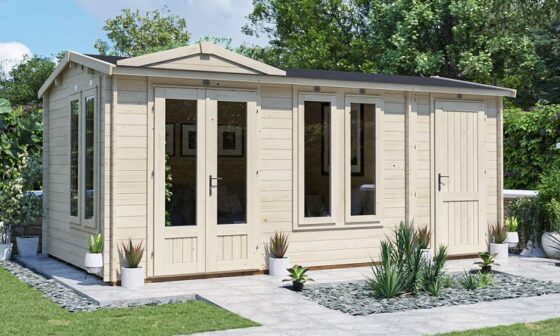
Moving to a new home can feel like a whirlwind, but with the right approach, it can be a smooth, even enjoyable process. Whether you’re moving down the road or across the country, having a solid plan is the key to keeping stress at bay. This ultimate checklist will walk you through every step of the moving process to ensure nothing gets overlooked.
Step 1: Declutter Your Home
Before you start packing, take the opportunity to declutter. Moving is the perfect time to let go of things you no longer need or want.
Start with one room at a time and sort your belongings into three categories: keep, donate, and toss. Be ruthless—if it hasn’t been used or loved in the past year, it’s probably time to say goodbye. The less you have to move, the quicker and cheaper the process will be.
Step 2: Organize Your Storage
Not everything in your current home may fit in your new one, or you might need temporary storage during the transition. That’s where planning ahead for storage comes in handy. Use this storage unit size guide to determine what size unit you’ll need for your belongings. This saves you the headache of guessing or ending up with a unit that’s too small (or wasting money on one that’s too large).
Label boxes with their contents and group them by category to make it easy to retrieve items when needed. If possible, choose a climate-controlled storage facility to protect delicate items like furniture or electronics.
Step 3: Gather Packing Supplies
Packing efficiently requires the right supplies. Here’s what you’ll need:
- Sturdy boxes – A mix of small, medium, and large for different types of items.
- Packing tape – High-quality tape that won’t give out halfway through your move.
- Bubble wrap and packing paper – Essential for protecting fragile items.
- Labels and markers – Clear labeling will save you endless time when unpacking.
- Furniture covers – Keep your sofas, mattresses, and other large items dust-free and damage-free.
Buying supplies in advance also prevents any last-minute scrambles to find what you need.
Step 4: Create a Moving Timeline
To keep things organized, create a detailed timeline for your move. Break tasks into smaller steps and assign deadlines to each.
For example:
- 8 weeks out: Research moving companies, get quotes, and book your movers.
- 6 weeks out: Declutter and start packing non-essential items.
- 4 weeks out: Notify utilities and services of your move.
- 2 weeks out: Confirm moving details and pack essential items.
- Moving day: Conduct a final walkthrough to ensure nothing is left behind.
Having a timeline not only keeps you on track but also makes the whole process feel less overwhelming.
Step 5: Notify Important Contacts
When you’re moving, don’t forget to update your address with everyone who needs it. This includes:
- Your bank and credit card companies.
- Insurance providers.
- Employers and subscription services.
- Friends and family.
Filing a change of address with the postal service ensures you don’t miss any important mail during the transition.
Step 6: Pack Strategically
Packing isn’t just about throwing things into boxes—it’s about doing it in a way that makes unpacking easier.
Start with non-essential items like books, off-season clothes, and decor. Pack room by room and label each box with its destination (e.g., “Kitchen” or “Master Bedroom”). For fragile items, wrap them individually and use bubble wrap or towels for extra padding.
Keep a separate “essentials box” with items you’ll need right away in your new home. This might include toiletries, a change of clothes, basic kitchen items, and important documents.
Step 7: Plan for Moving Day
The big day will run much smoother if you’re prepared. Make sure you:
- Confirm all details with your movers, including arrival time and payment terms.
- Have cash on hand for tipping movers if you choose to do so.
- Pack a cooler with snacks, water, and any medications you might need.
- Keep valuables like jewelry or important documents with you rather than in the moving truck.
If you have kids or pets, arrange for someone to look after them during the move. This keeps them safe and gives you space to focus.
Step 8: Clean Both Homes
Before leaving your old home, give it a thorough clean. This is especially important if you’re renting and hoping to get your deposit back. Dust surfaces, vacuum floors, and wipe down appliances.
At your new home, clean before unpacking to start with a fresh slate. Even if the previous owners or tenants cleaned, you’ll feel better knowing it’s spotless.
Step 9: Unpack with Purpose
Unpacking can feel overwhelming, but it doesn’t have to be. Start with the essentials box so you can settle in quickly. Then, tackle one room at a time, beginning with spaces you’ll use the most, like the kitchen or bedroom.
As you unpack, take the time to organize items rather than simply unloading boxes. It’s easier to set up good habits now than to reorganize later.
Step 10: Celebrate Your New Space
Once everything is unpacked and your new home feels like yours, take a moment to celebrate! Order takeout, relax on your couch, and enjoy the hard work you’ve put into making the move a success.
Moving can be a lot of work, but with a clear plan and the right steps, it doesn’t have to be overwhelming. By staying organized and tackling tasks one at a time, you’ll set yourself up for a stress-free experience and a fresh start in your new home.


